The Baldwin Locomotive Works built engines 3800 through 3828 to the Santa Fe’s specifications in 1919 and went on to construct all 140 engines of this class by 1927. Super-sized 2-10-4s replaced 2-10-2s on some Santa Fe lines after 1938, but 3800s continued working the mountain passes of Cajon, Raton, and Tehachapi until replaced by diesel-electrics. Mostly retired by 1953, the last engines of the 3800 class were scrapped in 1956.
Though the 3800s were built to standard dimensions, their appearance evolved over the eight years of their construction and changed further while they were in service. Various details, including the square cab, two sandboxes, and Elesco feedwater heater system with the type CF two-stage water pump, mark Broadway’s model as a representative of the group built in 1924, engines 3876 through 3890. Its detailing is appropriate from that time to roughly the mid-1930s, when all the 3800s received a foam-collapsing system that’s not included on the
model.
Broadway is also offering this engine as the one-of-a kind 2-10-4 no. 3829, built as part of the 1919 order but with an experimental four-wheel trailing truck not applied to any other 3800s.
Detailing on the HO 3800 includes separately applied wire handrails and uncoupling levers as well as separately applied piping and appliances. There is some molded-on piping, but it mostly doesn’t detract from the overall effect. Under the cab, however, piping and brake equipment are molded onto solid backgrounds on either side where the real engine had open space.
These engines were built with prominent canvas cab awnings extending over the arched tops of the cab windows, and the tiny molded awnings hiding under the cab handrails don’t do them justice. The oil separator for the feedwater heater system is missing – it should be under the pilot deck and behind the pilot beam on the left side.
The model comes with two die-cast metal ladders to be installed on the valve gear hangers but no instructions on how to do so. The ladders fit at the front end of the hanger on each side, with the notch or step on the ladder forward and the locating tab inside the hanger. I used cyanoacrylate adhesive to secure them, but epoxy might be a better bet since these parts are in such vulnerable positions.
There should also be a long step below the crosshead guides on each side. Omitted on the model, the steps should extend from the rear cylinder head covers to vertical supports hanging from the crosshead guide yoke behind the ladders.
The side rods are stamped metal. The engines’ original slab rods were about 4 inches thick, but the model’s rods scale only half that and don’t have the substantial heavy look of the real thing.
The locomotive and tender are finished in matte black with appropriate aluminum (silver) lettering. The smokebox front and smokestack are a graphite color the Santa Fe called “Tarpon Gray.” The driving and pilot wheels are painted black but have shiny metal axle ends, which should also be black. The shiny tender wheels are mostly hidden but should be black as well.
The engine runs smoothly and quietly, with little mechanical noise to compete with the sound system. Its speed range is excellent, as the real 3800s were limited by timetable to a maximum speed of 55 mph and were usually held to top speeds of 40 to 45 mph in service.
With its traction tires in place, this 2-10-2’s drawbar pull is equivalent to 80 free-rolling freight cars on straight level track. Even without the traction tires, using the optional driver set included, the engine handles about 40 cars.
The recommended minimum radius of 22″ is as tight a curve as the engine can manage. It runs more reliably on larger radii.
The sound effects are typical of QSI, but with a new “drifting” feature which quiets but doesn’t completely eliminate the exhaust chuff when the throttle setting is reduced. The drifting effect was more noticeable in DC operation than with DCC, but the operator’s manual says this effect will be more pronounced with higher values set in configuration variables CV3 and CV4. The chuff rate isn’t exactly four per driver revolution, but in DCC operation this can be adjusted using CV56.
Santa Fe power. Overall, the Broadway Limited 3800-class 2-10-2 gives a good impression of its prototype, whether posed rods-down for a roster shot or hard at work on layout grades. – Andy Sperandeo, executive editor
Price: $349.99
Manufacturer
Broadway Limited Imports LLC
4 Signal Ave., Ste. C
Ormond Beach, FL 32174
Phone: 386-673-8080
www.broadway-limited.com
Description
Ready-to-run plastic and
metal 2-10-2 Santa Fe-type
steam locomotive
Road numbers
(All Atchison, Topeka & Santa Fe): 3829 (2-10-4), 3855, 3876, 3877, and painted but unlettered
Automatic dual-mode (DC and
DCC) sound and control system
Cab interior with backhead detail
and crew
Can motor with flywheel geared
to third driving axle
Constant headlight
Coupled wheelbase: 89′-6″,
requires 14″ turntable
Drawbar pull: 2.88 ounces,
5.44 ounces with traction tire
Engine and tender weight: 27.5
ounces (engine alone weighs
21.5 ounces)
Kadee Magne-Matic couplers
(tender coupler .020″ too high)
Minimum radius: 22″
RP-25 contour wheels
(mounted in gauge)





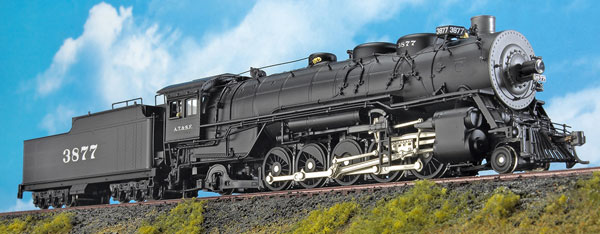
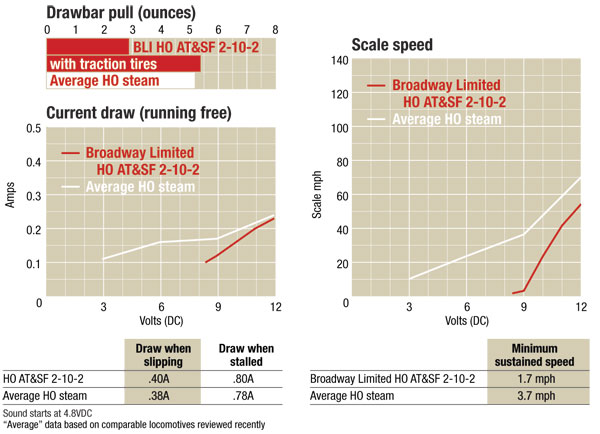

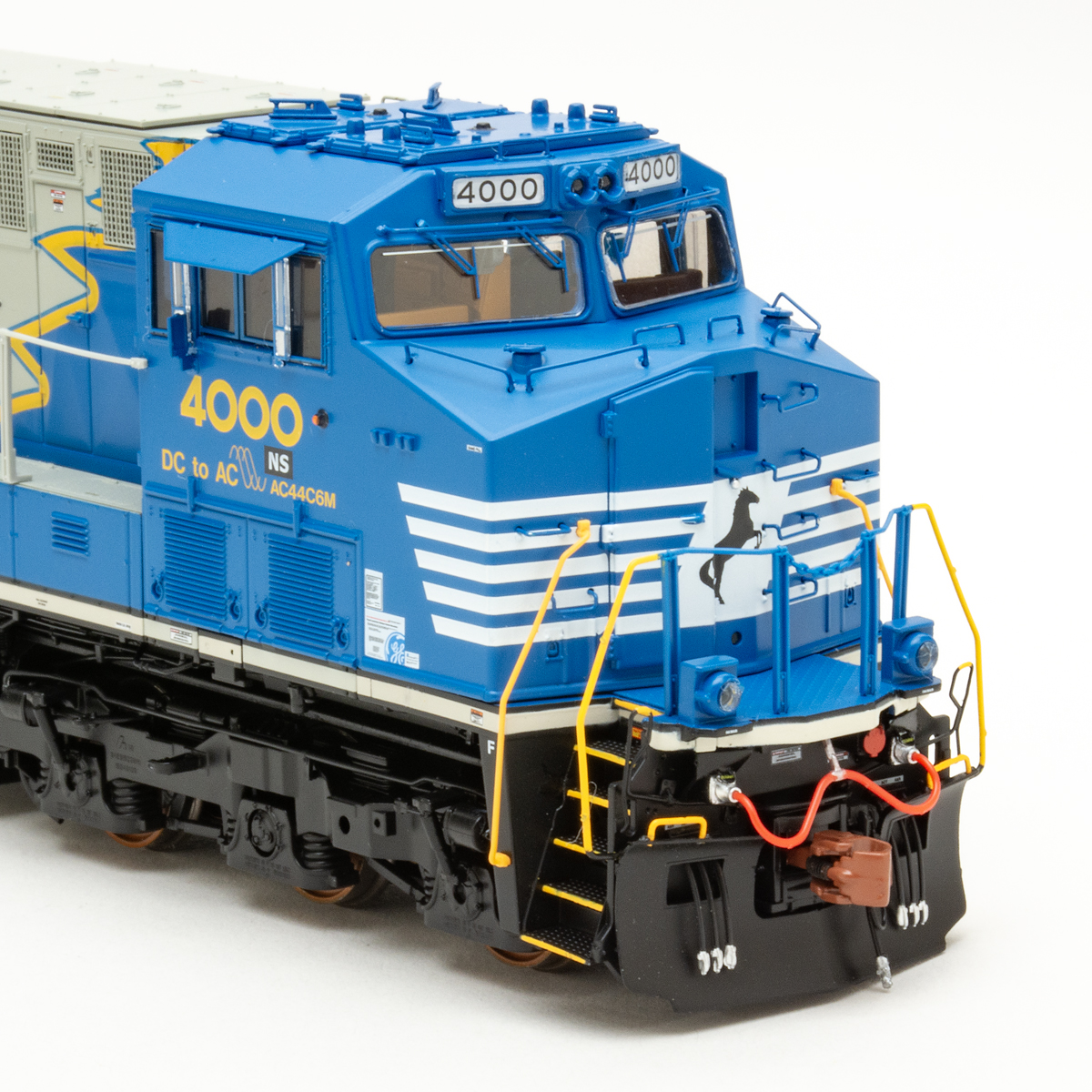
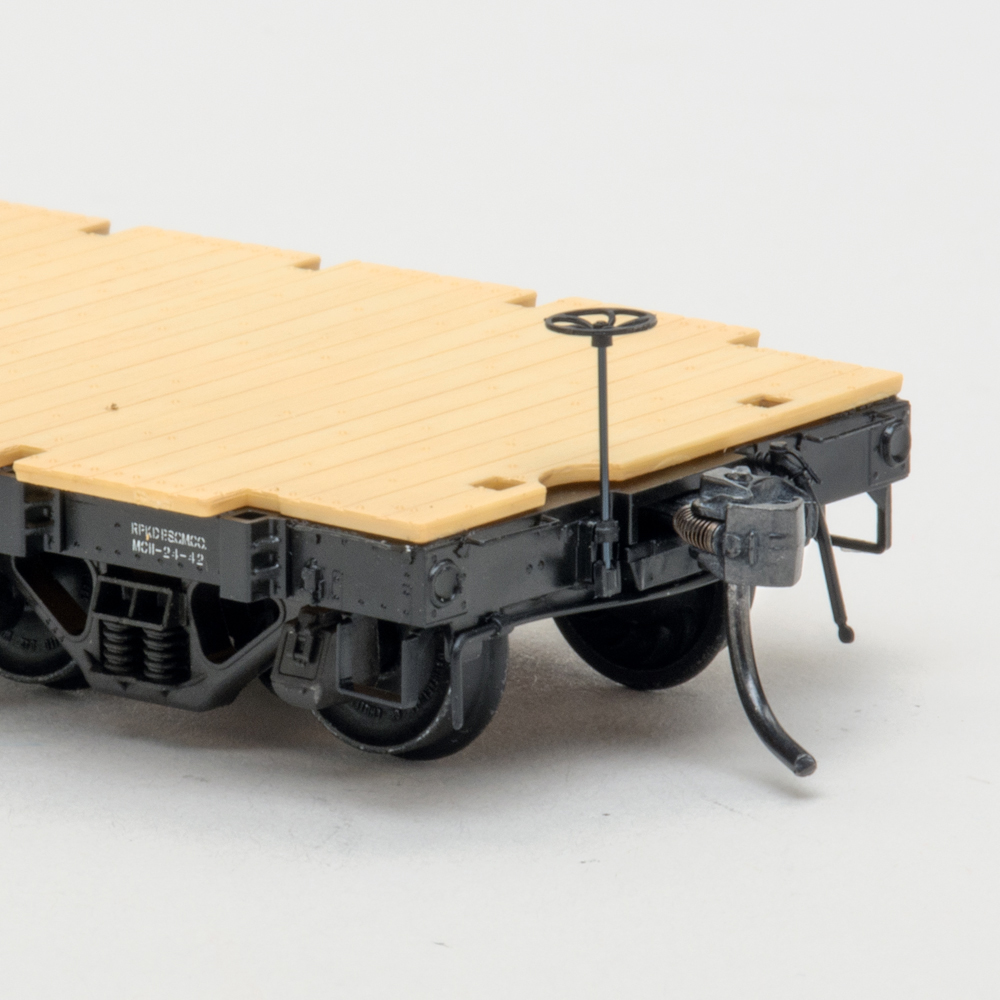
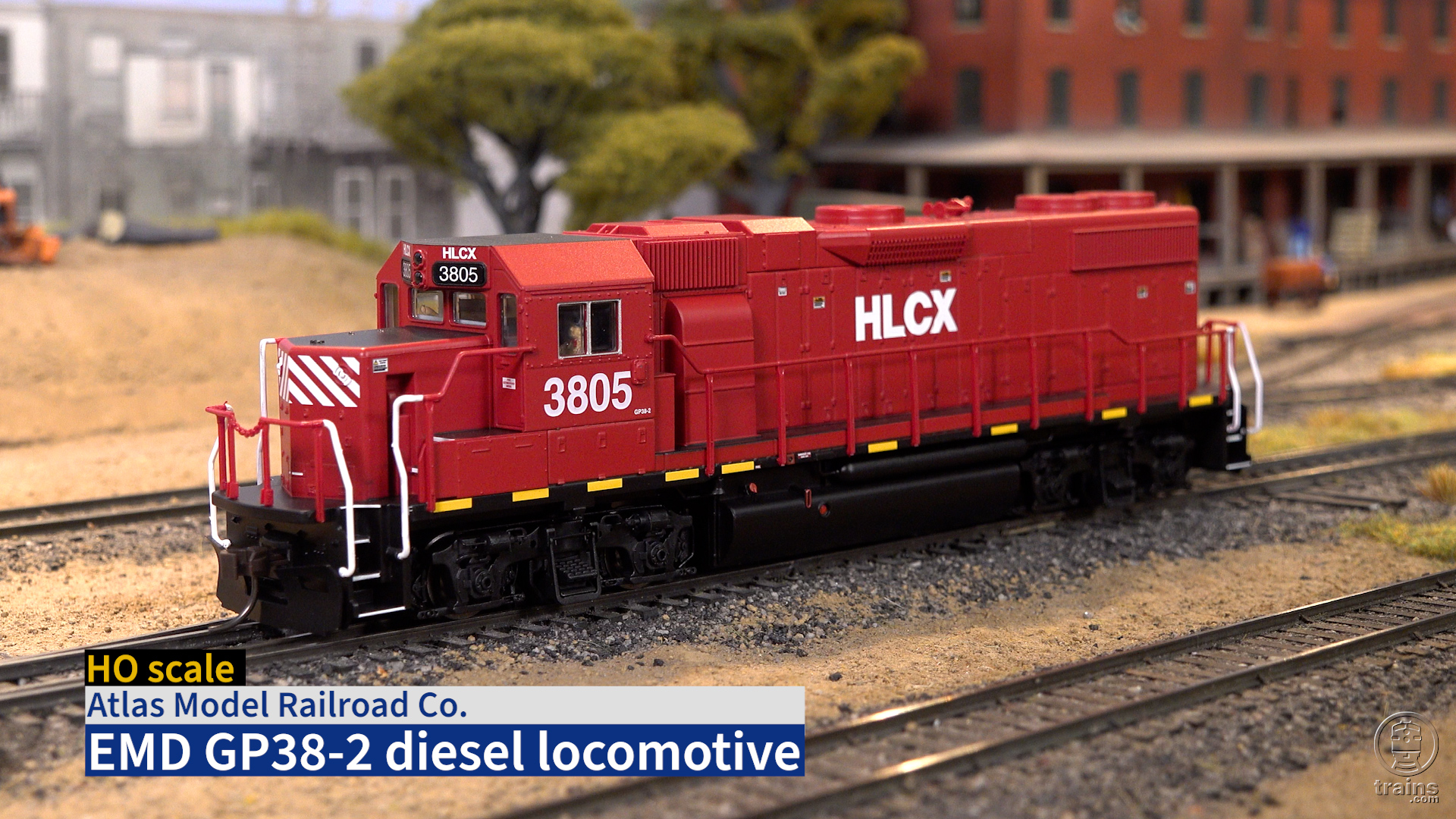
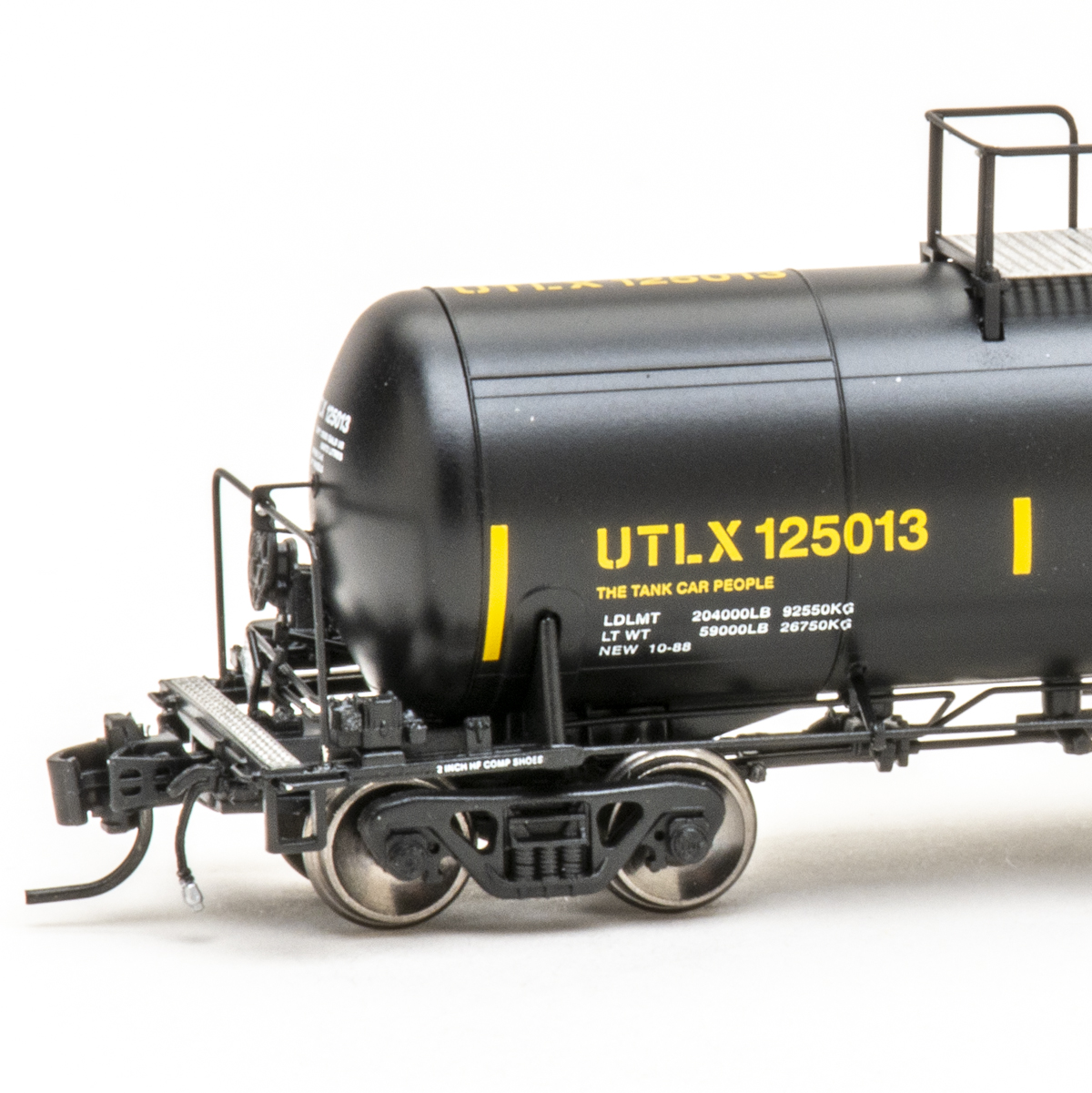




Looks great but ran bad
My first BLI 3879 ran poorly and was returned. The second 3879 from a different dealer ran great after I lubricated it. Instructions for maintenance were missing, but I used instructions from a BLI 4-8-4 model, which also runs great. Chuff synchronization on the 2-10-2 is better than on the 4-8-4.
I bought two of the 3800's, one was the 3829 and the other was 3881.
My dealer replaced the 1st 3829 because it simply would not run. The second replacement ran…sometimes but jerky and the sound quit. The 3rd rpl. is doing OK.
The 3881 was damaged on the right side above the drivers but no matter…it wouldn't even power-up. Dealer replaced it with 3877 which ran for a few minutes and something caused smoke and odor in the tender and the sound was now gone. (I would venture a cap. went south). No matter, soon the unit quit entirely and with that I called BLI and they agreed to send me postage to return it to them for repair. I was told to expect about 2 mos. for return. My plans of buying the 3rd 3800 are cancelled. I have many BLI units and the only other problem was a pinched wire on a RSD-15 which I repaired in a few minutes.
Charles Bickel of Pueblo West Colo
Impressive as usual!
I note that with some modifications it would fit quite nicely as a CN 4100; all-weather cab, plus a proper Vanderbilt tender (CN style.) Now, if only such goodies were available in N scale!
Gordon
old railfans never die; they just lose track!
These engines are very good visually and some experts seem to think they are the wave of the future BUT the mechanisms are really complex and folks who are used to servicing their own engines will find repairs very challenging indeed. Having sent my Precisioncraft
Reading T-1 back to the manufacturer twice in less than a year, I'm wondering if they'll stand the test of time. My comment: Buy one if you're interested
but don't retire your older engines just yet!
I purchased a unit with NH markings, but it failed to operate. The sound system came on when the tender and loco trailing truck were on the rails, but as soon as the drivers touched the rails it died. I returned it, and as no replacement was available I purchased a Walthers Berkshire (undecorated C&O because they were out of stock on the decorated model). It performs admirably.
Santa Fe modelers were pleased when BLI announced this locomotive. Unfortunately, it suffers from a lack of attention to quality control and is much less impressive than it could have been. I have seen 4 of the models, and each of them suffered from an annoying and highly visible engineering and/or manufacturing defect–the forward-most running board on the engineer's side is angled from front to back at about 10 or so degrees, which is enough to be, really, downright ugly. Was this a failure of the model's design or is there a production tolerance off somewhere? Who knows? But I, for one, and I'm sure other, spotted this as well as the weird little cab window sunshades on the pilot model photos, and suggested to BLI that they make corrections. Apparently that didn't occur. It's a shame, because the ugliness in my mind makes this a model to be avoided. Interesting, that the photo that leads off the MR review pretty clearly shows that someone bent the running board in question into a slight curve so that the angle wouldn't show; c'mon, MR, if you're going to review products, do so with fairness, and comment on the bad as well as the good.
Overall, it is an excellent buy, as typical with BLI.
This was the first sound-equipped model I purchased, and after having purchased 4 more different sound-equipped models afterwards, it is still my best-sounding and most reliable locomotive. A definite must-have for any Santa Fe fan.
On arrival My 1st A.T &S.F No.3877 ran great ….But only in reverse lol.
Replacement has run flawlessly now for close to a year abet only on the weekends on our club layout but seems a strong pulling & dependable engine. And after painting those shiny axel ends and siderod fluting and adding a weston models crew she's one handsome engine and one of my favorites .